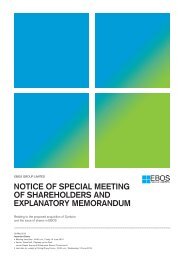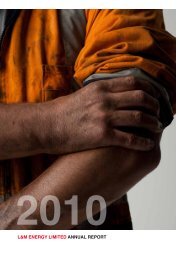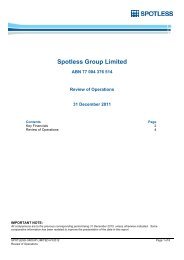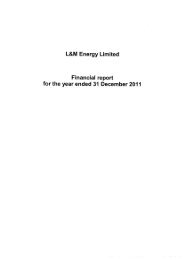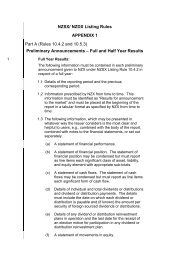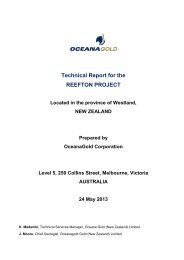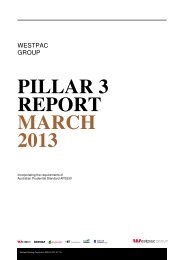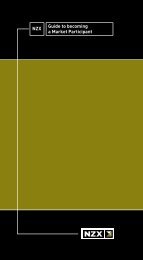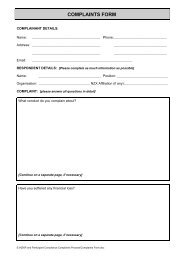Annual Report 2013 - Mainfreight
Annual Report 2013 - Mainfreight
Annual Report 2013 - Mainfreight
You also want an ePaper? Increase the reach of your titles
YUMPU automatically turns print PDFs into web optimized ePapers that Google loves.
3 Financial Risk Management Objectives and Policies (continued)<br />
Foreign Currency Risk (continued)<br />
The following sensitivity is based on the foreign currency risk exposures in existence at the balance sheet date:<br />
At 31 March <strong>2013</strong>, had the New Zealand Dollar moved as illustrated in the table below with all other variables held constant, post tax profit<br />
and equity would have been affected as follows:<br />
Judgements of reasonably possible movements:<br />
Post Tax Profit<br />
Higher/(Lower)<br />
<strong>2013</strong><br />
$000<br />
2012<br />
$000<br />
Equity<br />
Higher/(Lower)<br />
Group<br />
NZD/USD +10% (861) (690) (5,405) (5,198)<br />
NZD/USD -10% 1052 844 6,607 6,353<br />
NZD/AUD +10% (1,687) (1,499) (9,870) (9,306)<br />
NZD/AUD -10% 2,062 1,833 12,062 11,374<br />
NZD/EURO +10% 172 (2,032) (8,106) (7,959)<br />
NZD/EURO -10% (210) 2,484 9,909 9,728<br />
Parent<br />
NZD/USD +10% (69) (48) (69) (48)<br />
NZD/USD -10% 84 58 84 58<br />
NZD/AUD +10% (594) (391) (594) (391)<br />
NZD/AUD -10% 726 478 726 478<br />
NZD/EURO +10% 9,450 10,255 9,450 10,255<br />
NZD/EURO -10% (11,550) (12,534) (11,550) (12,534)<br />
The movement in equity is a combination of movement in post tax profit and the movement in the Foreign Currency Translation Reserve as<br />
values of overseas investments in subsidiaries change.<br />
Management believes the balance date risk exposures are representative of the risk exposure inherent in the financial instruments.<br />
Credit Risk<br />
In the normal course of business the Group is exposed to credit risk from financial instruments including cash, trade receivables, loans to team<br />
members and derivative financial instruments.<br />
Receivable balances are monitored on an ongoing basis with the result that, in management’s view, the Group’s exposure to bad debts is not<br />
significant. The Group does not have concentrations of credit risk by industry but does have concentrations by geographical sectors (refer to<br />
Segment <strong>Report</strong>ing in note 5).<br />
With respect to credit risk arising from the other financial assets of the Group, which comprise cash and cash equivalents, loans to team<br />
members and certain derivative instruments, the Group’s exposure to credit risk arises from default of the counterparty, with a maximum<br />
exposure equal to the carrying amount of these instruments. The Group has a policy only to deal with registered banks or financial institutions<br />
with high quality credit ratings.<br />
It is the Group’s policy that all customers who wish to trade on credit terms are subject to credit verification procedures including an<br />
assessment of their independent credit rating, financial position, past experience and industry reputation. Risk limits are set for each individual<br />
customer in accordance with parameters set by the Board. These risk limits are regularly monitored.<br />
<strong>2013</strong><br />
$000<br />
2012<br />
$000<br />
Financial Statements<br />
85



